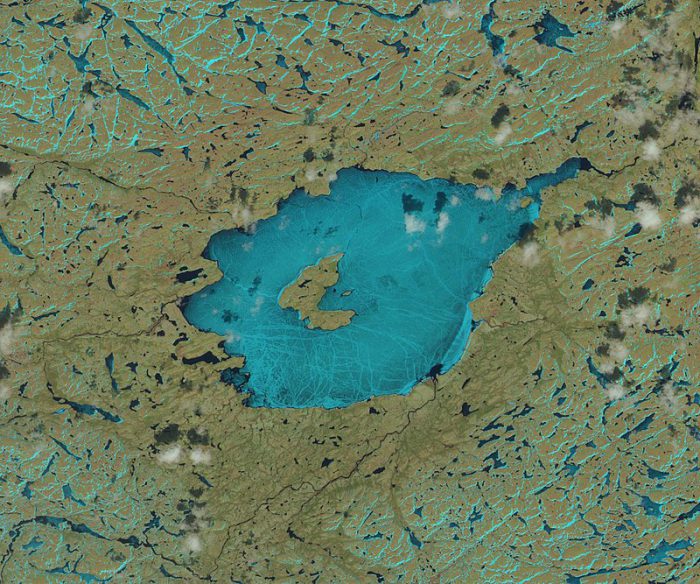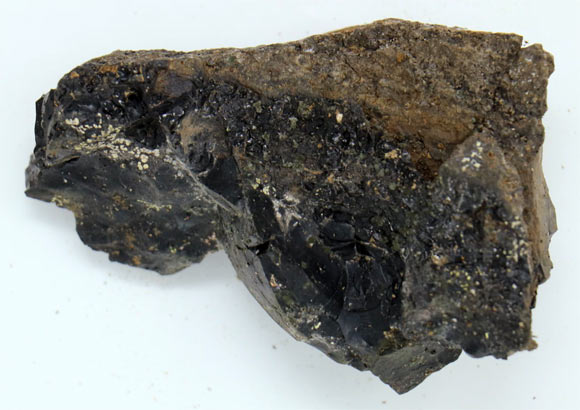All across the planet, through the solar system, and far beyond, there are rocks. Lots and lots of rocks. Lots and lots of wildly different rocks!
But no matter what rocks we're talking about, they all have something in common: They were formed by some combination of heat and pressure. The type of heat and/or pressure involved, has a big say in what type of rock that you get.
A newly published study about a discovery in a crater in Labrador has found a rock that was formed in the hottest known temperatures of any known rock on Earth. A staggering 2,370 degrees Celcius (4,298 degrees Fahrenheit)!
Though it is cool to the touch now, you could say that it is Earth's hottest rock. Let's meet this hot rock and see what it's story is all about.
An explosive history

A satellite image of Mistastin crater and its lake. (NASA/Wikimedia Commons)
Mistastin crater is found in northwestern Labrador, near the Quebec border. It was formed about 36 million years ago, when a meteorite slammed into the ground. Ka-BOOM! It created what is now a 28-km (17-mile) wide crater, with a pristine lake in the centre that is about 16 km (10 miles) across.
Though a beautiful setting now, it would've been a cauldron of fire and dust on the day that it was formed. The force of the meteorite's impact created an enormous explosion that melted rocks instantly. Then, this molten material would've cooled and reformed as new rocks.
Moon world
The unique setting in Mistastin crater is quite similar to what is found on the Moon (minus the lake, of course!). And that has made it an ideal place for research and training for astronauts and vehicles that could one day be used on other worlds.
The hot rock in question was discovered in 2011 during an expedition run by the Canadian Space Agency (CSA). At the time, it just looked like a hand-sized piece of black glass rock. But over the next decade, researchers became more curious about its origins and ran tests.
The black glass is full of zircons, a material formed under extreme heat. Depending on the structure of those zircons, scientists can determine the temperature in which they were formed. The final estimation of 2,370 °C (4,298 °F) is hotter than much of the Earth's mantle. Yee-ouch!
Researchers are hoping that by learning more about craters on Earth—and the rocks found within them—they'll be better prepared to study craters on the Moon and elsewhere in our solar system.
Rock on, scientists!
 This piece of black glass was formed under record-setting intense heat. (Gavin Tolometti)
This piece of black glass was formed under record-setting intense heat. (Gavin Tolometti)










That is so cool 😆